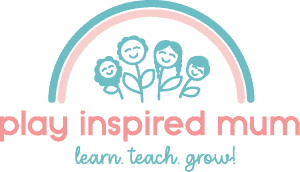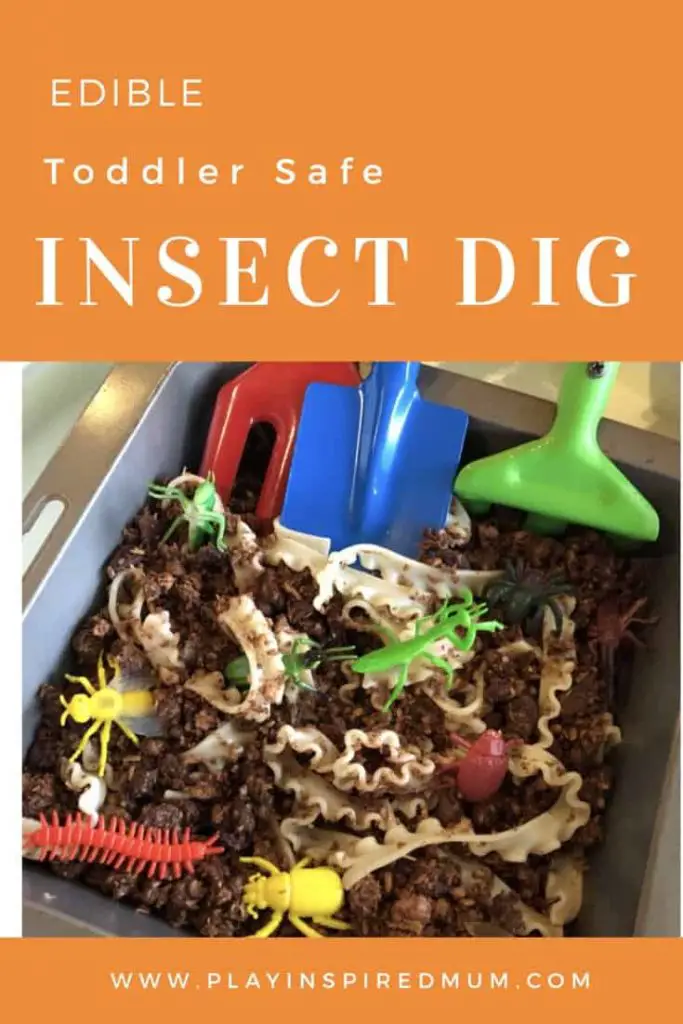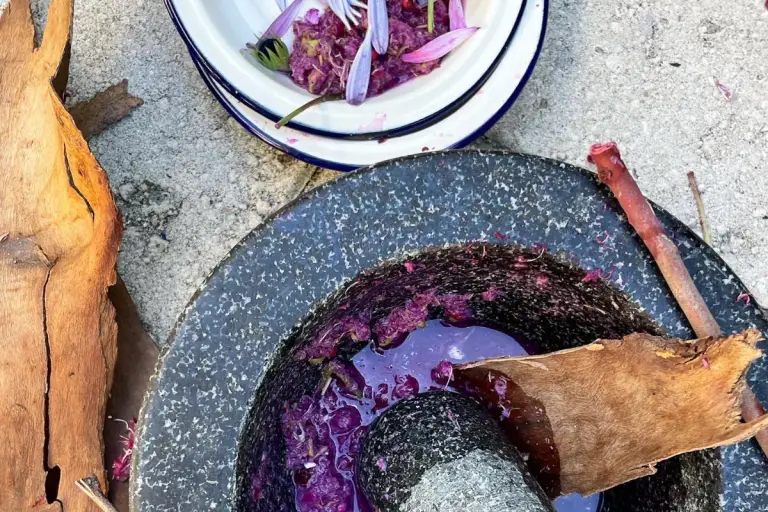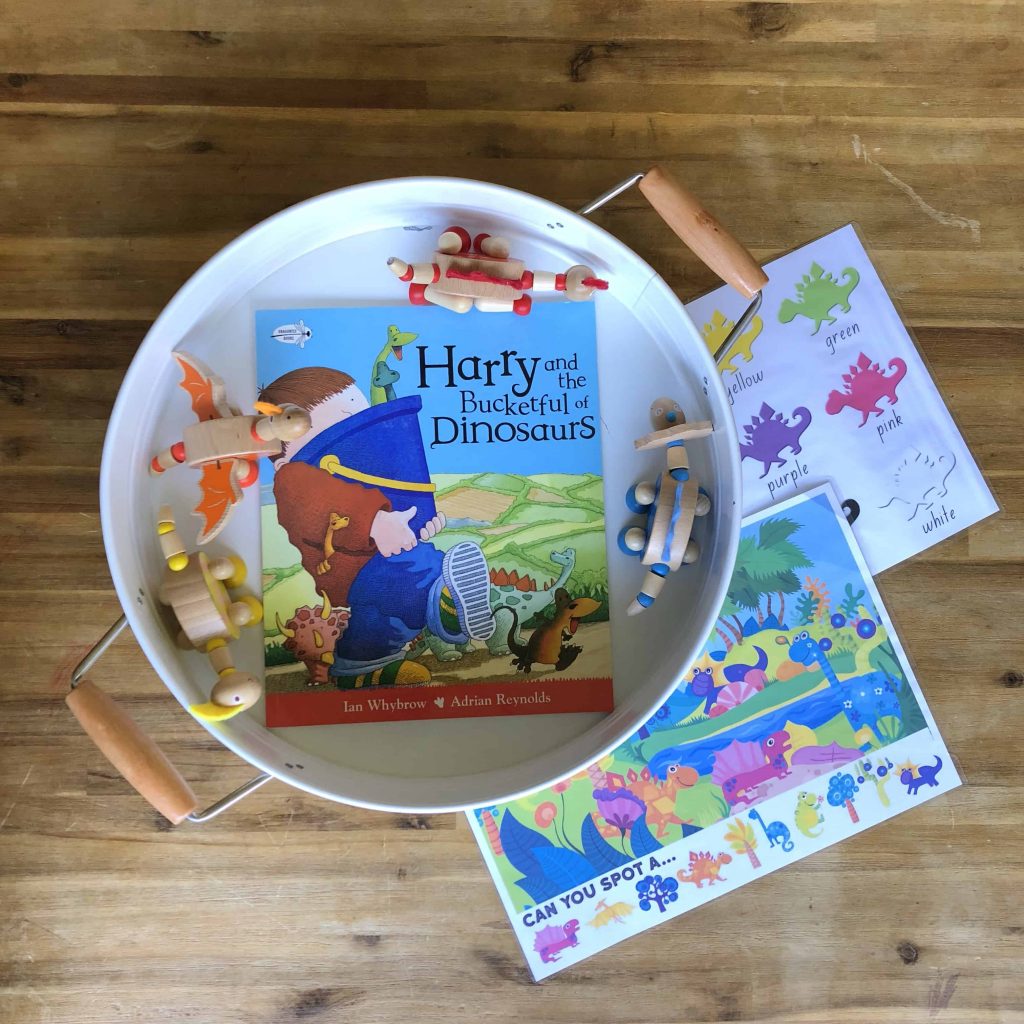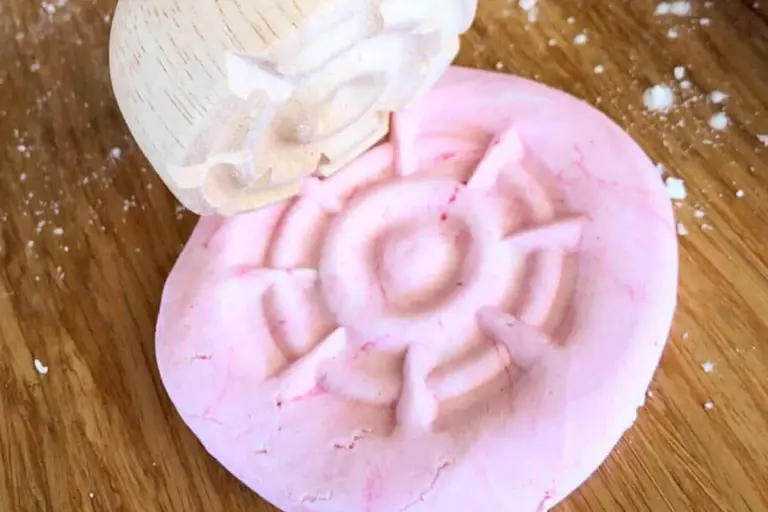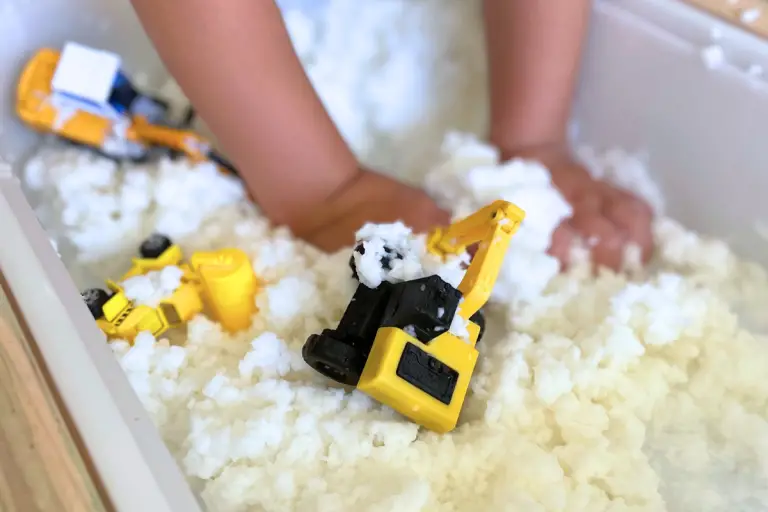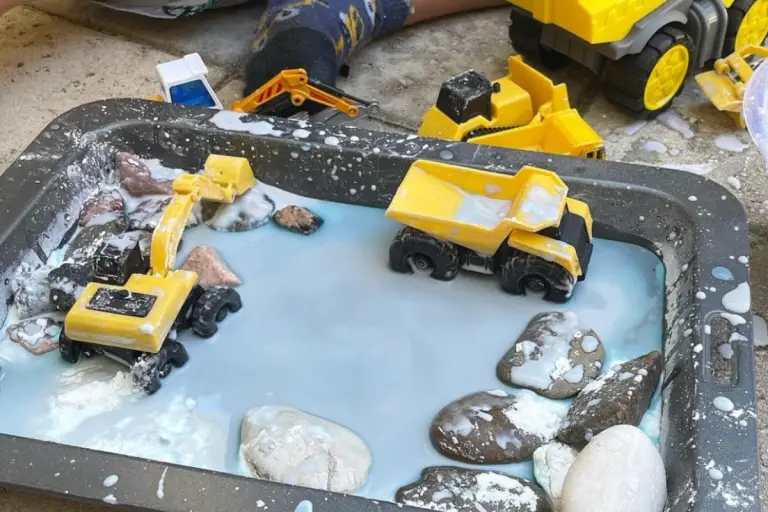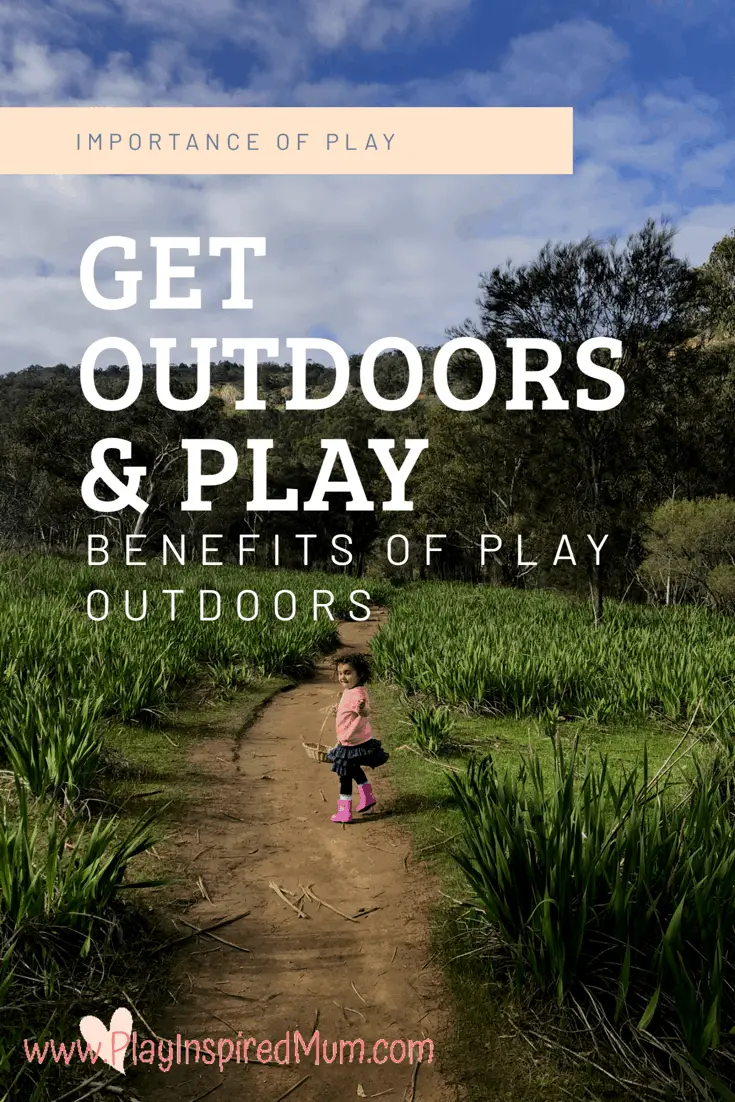Mini Beast Shredded Paper Sensory Bin
Disclosure: This blog contains affiliate links which I may earn a small commission from if you purchase through them, at no extra cost to you.
A shredded paper sensory bin is perfect for messy play!
We are huge fans of bugs at our house.
There aren’t often many days between a little six-legged friend joining us in play. The girls will often care for them in their little bug box before being re-released back into the garden.
Today, we kept our insect play based on our little toys insects with this simple, shredded paper sensory bin.

Mini Beasts Shredded Paper Sensory Bin
Sensory play is always a hit at our house.
With so many learning opportunities that stem from sensory play, I was excited to set up this Mini Beasts Sensory Tray for Miss 2.
The aim of the activity was to encourage her to search through the paper and nature items, find the insects and match them with their corresponding pictures on the checklist or flashcards.
What you need to set up a Mini Beast Shredded Paper Sensory Bin
Things you will need:
- Play Tray or Container
- Shredded Paper
- Branch Cut Offs
- Toy Insects
- Magnifying Glass
- Bugs Alive Activity Sheet
- Bugs Flash Cards
- Book – The Wonders of Nature
Use the resources around you. Collect natural resources from your own garden or during your morning walk. Involving children in the setup of an activity is a great way for them to invest their interest.
Plastic tubs or storage containers make for great sensory bins. In this instance, the materials are dry so even a cardboard box would work well. Simply trim of any excess height or keep the depth to make foraging more exciting!
This leads to more engagement in the task when it comes to crunch time.

How to Set Up Your Mini Beasts Shredded Paper Sensory Bin
This activity is super easy to set up.
- Spread your shredded paper across the base of you play tray.
- Stack your branch cut offs ensuring there are gaps between your branches to hide your insects in. Our first layer had four branches laid vertically, four on top of those horizontally then four vertically etc until they were used up.
- Hide your insects around your little log pile. I had some hidden in plain sight and then others were concealed.
- Explore the sensory small world!
With consideration of Miss 2s abilities, this activity was set up to offer its challenges. That being said, consideration was also made to not have it too difficult either. We added some things she was familiar with but then some to build new knowledge around too.
This scaffolding is a handy little strategy to keep children engaged and motivated to learn.
What should a sensory bin be?
A sensory bin is essentially a large plastic tub or tray filled with matter that stimulates a child’s senses. This bin may be filled with
- Water
- Taste Safe Mud
- Aquafaba Play Foam
- Pom Poms
- Stale cereal
- Leaves
- Coloured Rice
Think of how this matter is going to engage your child’s senses.
Will it make a sound?
How will it feel?
What does it smell like?
How is the matter going to look as it runs through their fingers?
How does it move?
Can it be scooped or poured?
Benefits of sensory bin play
Children learn best through interaction with their environment. Information is passed from their surroundings to them via their senses. Engaging children in sensory play offer so much stimulation for them to learn.
Sensory bins are a lot of fun. Fun, that is, also supportive of healthy physical and cognitive development. Every noise, smell, touch, sound, and sight will be feeding your child’s brain with information to allow it to make connections and grow.
Sensory bins inspire creativity. They can be used as an open-ended resource or structured activity.
Yes, sensory bins are seemingly simple. Don’t overthink it. Your child will be learning as they explore. As they run their hands through a bin of coloured rice, they will be gaining so much from the experience.
They will feel the cool grains slip between their fingers.
They will hear the steady stream landing as they transfer the rice from one vessel to another.
All of this, and more, will lead to learning.
Sensory Avoiders
For some children, sensory play can be overwhelming.
For these children, consider placing the activity into a ziplock bag.
They will still be able to search through the paper and nature items without having to actually touch them.
There is still plenty of learning happening and you never know, this could spark curiosity.
Who is to say they wont open the bag and sneak a finger in to explore once they build up a bit more confidence?
Inspiring Play with your Mini Beast Sensory Discovery
With her fingers twitching, Miss 2 was really looking forward to getting into this activity. Before letting her loose, we read her book, ‘Wonders of Nature‘.
This really is a lovely little book with fast facts, beautiful illustrations, and a running theme of creating awareness of the little treasures that nature presents us with.
With a quick journey across forests, the deserts, and seas in our little story, Miss 2 was excited to explore our little sensory setup just as the children had done in her book.



Child Led Play
Without much mention of the learning resources accompanying the play tray or the play brief, Miss 2 got busy discovering the insects lurking amongst the branches and nest of green.
Inspired by her book, she held her magnifying glass high to her face and began to discover what was lurking amongst the branches. Her face beamed when she discovered some familiar insects.
Miss 2 worked at retrieving her target without disrupting the branches. As she was examining the best way to navigate her way to her beloved fly, she discovered more and more little insects hiding in the shadows.
While she was pointing out the insects, I asked her questions.
- How many legs does this creature have?
- What colour is the beetle?
- Where do you think we would find a dragonfly in our yard?
- What do you think the fly would like to eat?
- How many insects can you see on top of the log?
Mostly, she answered them proudly. The rest we spoke about just quickly enough that she heard the answer.
After about ten minutes of exploring, her attention began to drift.
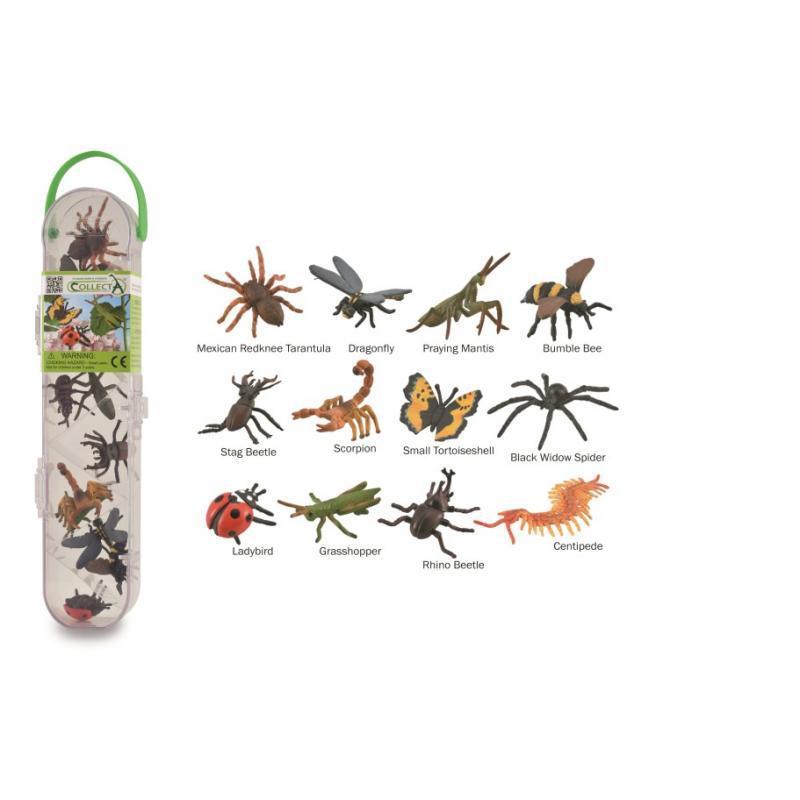

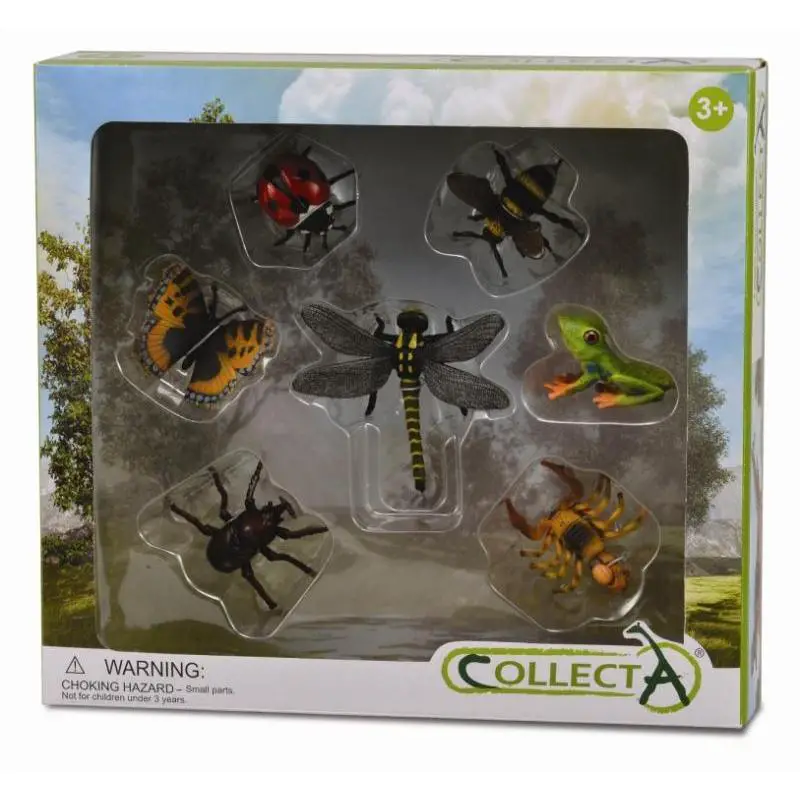
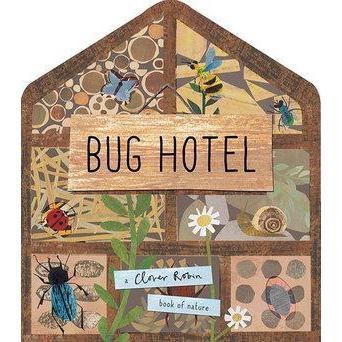
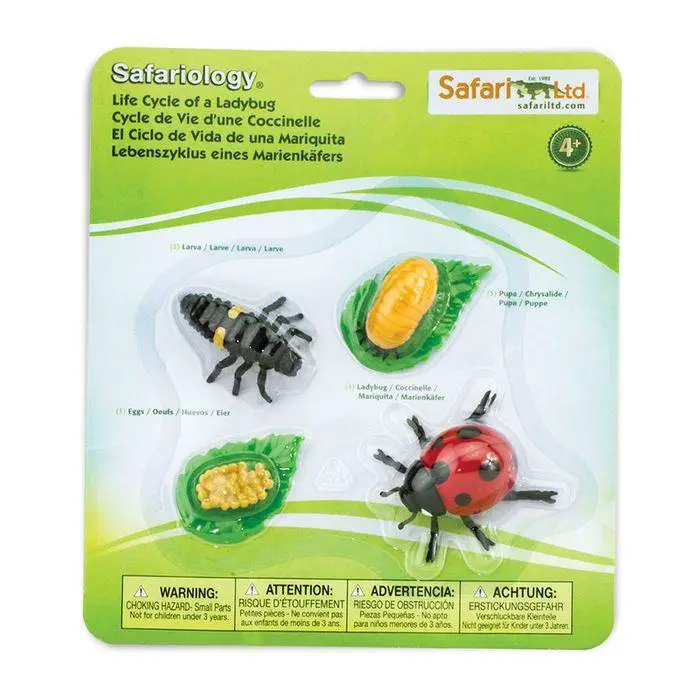
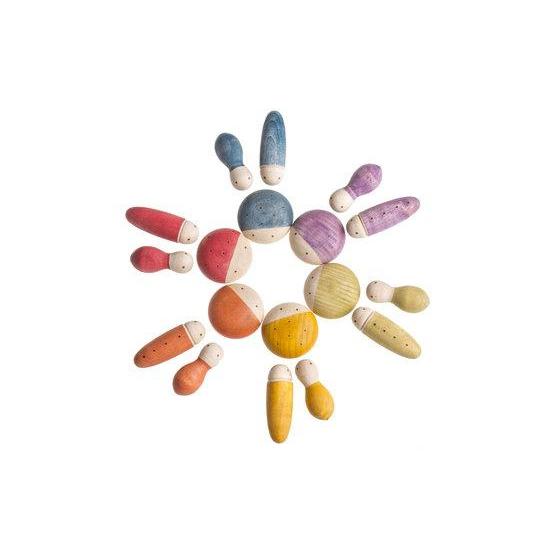
Adding Structure to An Open Ended Activity
There are so many benefits associated with open-ended play. That being said, a bit of structure can expose learning opportunities too.
The structure linked to this shredded paper sensory bin involved her looking at the resources that were around the tray. From here, she recognised some of the insects on the activity sheet and began to match the toys with the pictures on the mat.
Identifying and sorting by attributes is an important early number skill. This learning opportunity was well disguised in play!
Miss 2 placed the toys on top of the illustrations on the Activity Sheet. Before too long, the mat was covered.
In saying this, she still had plenty of insects left.
This is when I bought her attention to the flashcards.
Inspecting each one, she named the mini beasts that she recognised. We then learned the names of the ones she couldn’t identify, matching them up with the flashcards.
I began to join in adding a little trick question here and there.
She took a lot of pride in correcting my mistakes.
Learning Opportunities Presented Through Play
This activity held her attention for close to an hour. That does not happen often!
Throughout this hour, many learning opportunities were presented. While she was busy exploring the tray of paper, nature and creepy crawlies, Miss 2 was unknowingly developing so many skills.
These included:
- Vocabulary Building
- Identifying Patterns
- Pre-Literacy Scanning
- Sorting by Attributes
- Object Permanence
- Fine Motor Skills
- Cause and Effect
- Communication Skills
- Turn Taking Skills
This shredded paper sensory bin was another success!
Exploring the world of mini beasts is always fun. Learning through play is even better!
Not bad for essentially a box of paper and sticks, hey?
Are you going to give this a go?
We would love to see it too!
Feel welcome to share your interpretation of this activity in our Facebook Group!
